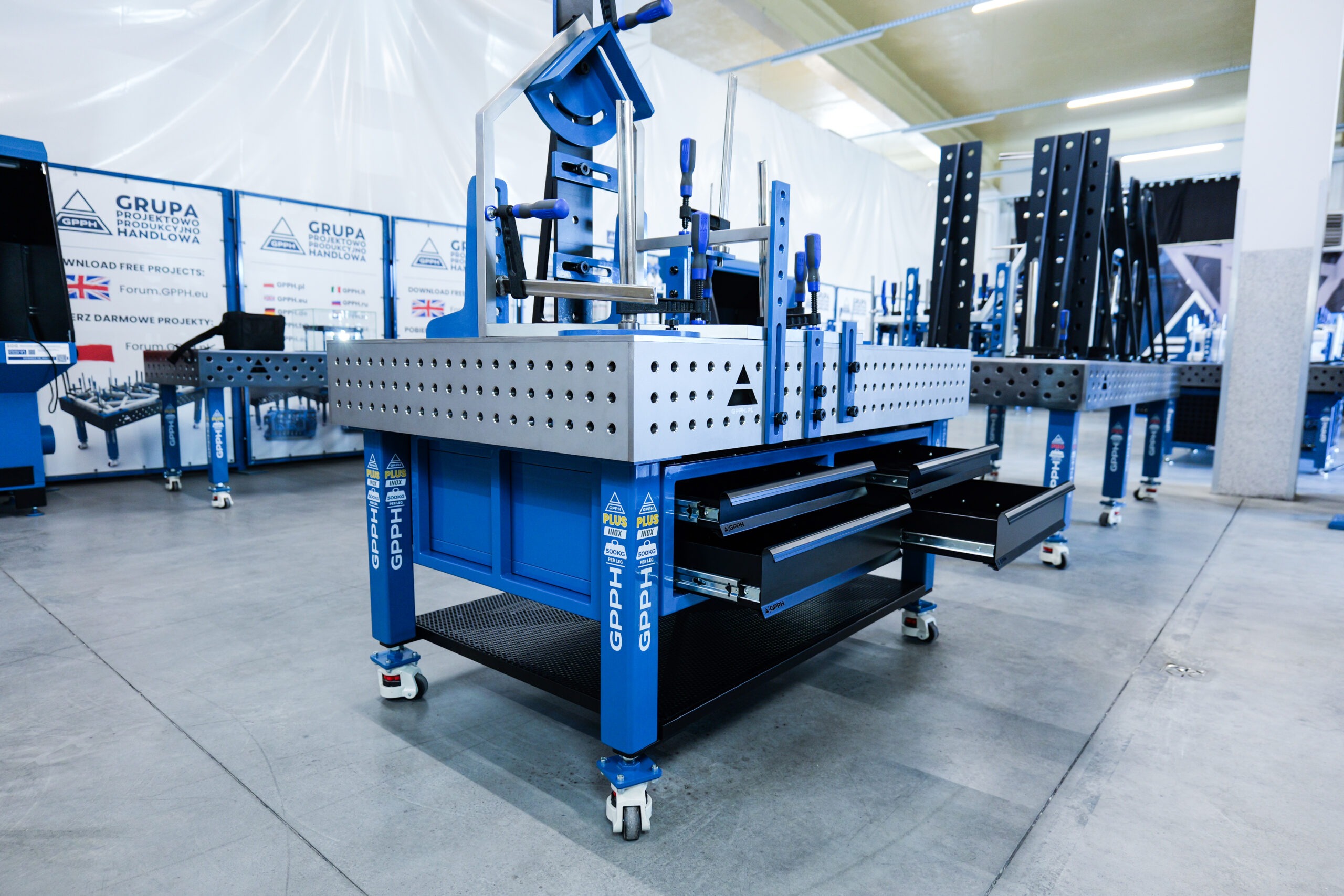Efficient workspace organization is crucial in welding workshops to maximize productivity and ensure safety. Welding tables play a pivotal role in creating a functional and organized environment. This article explores tips for arranging a welding workshop using welding tables, strategies to enhance workspace efficiency, and examples of different table configurations suitable for both small and large workshops.
Optimizing Workspace with Welding Tables
- Table Selection: Choose welding tables that suit your workshop size and workflow. Options range from basic stationary tables to versatile modular systems that can be customized with accessories like clamps, vices, and tool racks.
- Layout Planning: Design the workshop layout to optimize workflow. Position welding tables strategically to facilitate material handling, welding setup, and post-welding processes such as inspection and finishing.
- Space Utilization: Utilize wall-mounted or foldable welding tables to conserve space when not in use. Mobile tables with locking casters offer flexibility for rearranging the workspace or moving heavy assemblies.
- Storage Integration: Incorporate storage solutions beneath or alongside welding tables for easy access to tools, consumables, and safety equipment. Pegboards, shelves, and drawers keep essentials organized and within reach.
Enhancing Workspace Efficiency
- Workflow Segmentation: Divide the workspace into dedicated zones for welding, assembly, grinding, and finishing. Each zone should be equipped with appropriate tools and equipment to minimize setup time and streamline operations.
- Ergonomic Considerations: Adjust table height and orientation to promote ergonomic welding positions, reducing operator fatigue and improving weld quality. Ergonomic accessories like adjustable height stands and ergonomic chairs further enhance comfort and productivity.
- Ventilation and Safety: Ensure adequate ventilation and clear workspace layout to minimize exposure to welding fumes and hazards. Position welding tables away from high-traffic areas and ensure clear pathways for safe movement.
Examples of Welding Table Configurations
- Basic Stationary Tables: Ideal for small workshops or specific welding stations. These tables provide a stable surface for welding and assembly tasks, often equipped with slots for clamps and fixtures.
- Modular Welding Systems: Versatile systems that allow customization with add-ons such as tool trays, shelves, and adjustable height legs. Modular tables accommodate varying workpiece sizes and can be reconfigured as needed.
- Rotating and Tilting Tables: Specialized tables that rotate or tilt to facilitate welding of complex angles and positions. These tables are valuable for precision welding and assembly of intricate components.
- Welding Benches with Integrated Fixtures: Benches equipped with integrated fixtures and clamping systems streamline setup for repetitive welding tasks. They ensure consistent alignment and accuracy across multiple workpieces.
Závěr
Effective utilization of welding tables is essential for optimizing workspace efficiency in welding workshops. By carefully selecting tables that suit the workshop’s size and workflow, organizing the layout to enhance productivity, and integrating ergonomic and safety considerations, welders can create a conducive environment for quality welding operations. Whether in a small garage workshop or a large industrial facility, well-planned welding table configurations contribute significantly to workflow efficiency, operator comfort, and overall workshop productivity.
For more information on welding tables and workshop optimization, visit GPPH Group, where you can explore a range of welding solutions tailored to your workshop needs.

